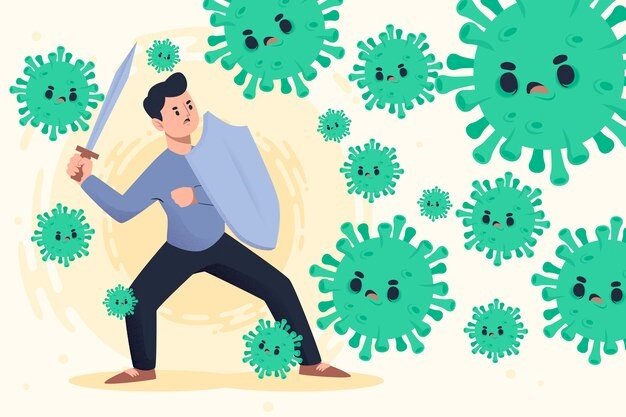By offering a delivery or travel service, even if you have a digital taxi system, you have contact with multiple people every day. This poses a risk to both drivers and your customers, so it's vital that all safety measures against COVID-19 are followed. This way, your company can return to the old style of work without setbacks, or any ups and downs.
It's not something that is recognized, but offering a service like this is currently beneficial for communities. Whether it's bringing food or medicine to the doorstep of someone who can't go out, or taking trips from one place to another avoiding public transportation. But, this can't be done without meeting certain parameters, we'll explain them so that your service has the best quality and is provided safely.
Wearing a face mask
If your company has drivers and also delivery people, everyone must wear a mask. On each delivery or trip, regardless of whether they have their full doses of the COVID-19 vaccine. When removing it from their faces, it's better to do it through the strips or elastic bands so that direct contact with the contaminated area is not made.
If you wear a non-surgical mask, avoid touching the face area. And it's recommended not to touch the masks either, if you do, wash your hands with warm water for at least 20 seconds. If you are in a situation where this is not possible, use a disinfectant gel or liquid. The requirements stipulate that, to be efficient, it must contain at least 60% alcohol.
How to clean the delivery vehicle or equipment?
The cleaning of the vehicle must be done regularly, for all areas that have direct contact with people, even if it's only the driver. Liquid disinfectant wipes are ideal for certain surfaces. But, on leather, fabrics, or other upholstery materials, it can discolor or damage the area. Some of the areas of constant contact that you must disinfect correctly are:
-
The steering wheel or handlebar, as the case may be, plus all the levers and buttons around it.
-
Gear lever and handbrake.
-
Different knobs and buttons that the board has.
-
Handles or door openers, both interior and exterior.
-
Radio, touch screens, information controls.
-
Seat belts.
-
Window handles, and seats, in some cases these are automated buttons.
-
The trunk handle, along with the various keys.
-
Tools such as the cross wrench, the hydraulic jack, among others.
After doing this necessary cleaning, hands and forearms should be washed for 20 seconds. Change to clean clothes, setting aside the clothes used for cleaning. Shoes must also be removed, in case they have to be used immediately they must be disinfected. It's important not to touch the face area until the whole process is finished!
How long does COVID-19 remain based on surfaces?
Studies were conducted in which the pathogen was tested on different surfaces, to see how long, and on which ones, it survived. For leather or cloth seats the exact number couldn't be specified but the period is quite short. On plastic surfaces such as the control panel or the dashboard it can remain for up to 72 hours. In metals such as steel or others that are used in handles, it remains for two to three days.
Cleaning is not the only thing that must be done for proper disinfection. Gloves should be worn when cleaning. In addition to ventilating the passenger compartment before starting the day and after each trip. Since the virus remains for approximately 24 hours in the air that circulates throughout the space inside the vehicle. With our Uber-like software you can personalize messages so that your drivers and passengers remember safety measures.
What products are suitable for proper disinfection?
The positive thing about having spent a considerable amount of time in this pandemic situation is that there are already a lot of disinfection products. The market has sought to satisfy its demand with variety and quality to ensure complete cleaning. Even for areas such as upholstery or certain internal surfaces of the car that are more delicate. Consumer Report recommends the following products for cleaning:
-
The usual soap and water, this is the simple method, as well as accessible to everyone. You should only be careful with the amounts of soap, we recommend reading the instructions for use. This will avoid unpleasant or penetrating odors that bother the customer, as well as grooves and discoloration.
-
Products made specifically to clean cars, there are even car brands like Toyota that have developed them. An example of these are easy-to-carry and safe disinfectant wipes.
-
Products that contain alcohol of 70% or more, such as wipes that contain isopropyl alcohol. These should not be abused, since as we can see, they have a higher concentration than recommended for hands. So gloves should be used, without rubbing too much because the different parts of the car can also be damaged.
-
Air conditioning circuits need disinfectant sprays, as this allows air to flow without the virus. Helping to sanitize the entire cabin with the interior vents.
Avoid bleach and hydrogen peroxide, although they are excellent for disinfecting, they are aggressive chemicals. So to avoid damaging the surfaces of the vehicle, only use the options that we mentioned above. And, if touch screens are going to be cleaned, it's best to check that the chosen product doesn't contain ammonia.
Keep everyone in your company safe
As a taxi system company, we also ensure that all requirements are met. Contact us so you can get your app with personalized messages about these measures. You'll be able to remind your passengers they must wear their masks in a simple and practical way. Choose ToolRides to face this new reality with all irons.






